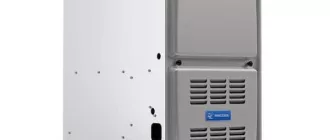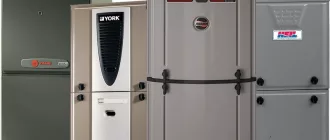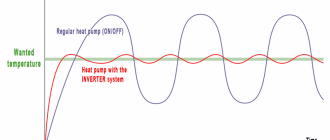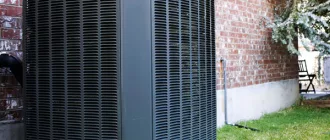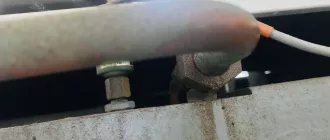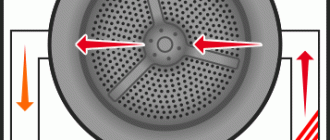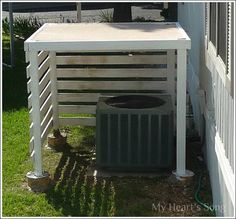
Should I Cover My Outdoor Unit During Colder Months?
As the colder months approach, many homeowners may wonder whether it is necessary to cover their outdoor unit. While protecting your unit from harsh weather conditions seems like a logical step, there are both pros and cons to consider before making a decision.
On the one hand, covering your outdoor unit can provide protection against snow, ice, and debris. This can help prevent damage and extend the lifespan of your unit. Additionally, a cover can help keep your unit clean, reducing the need for maintenance and improving its overall efficiency.
However, there are also cons to consider. Some experts argue that covering your outdoor unit can trap moisture inside, leading to rot and potential damage. Additionally, covering the unit may create a warm and cozy home for small animals, who could then chew through wires and cause significant damage. It’s also important to note that covering the unit can restrict airflow, potentially affecting its performance.
Ultimately, the decision to cover your outdoor unit during colder months depends on your specific situation. Consider factors such as the climate in your area, the condition of your unit, and the potential risks. Consulting with a professional HVAC technician can also provide valuable insight and recommendations.
In conclusion, while covering your outdoor unit during colder months can offer protection from snow and debris, there are potential downsides to consider. It’s important to weigh the pros and cons and make an informed decision based on your specific circumstances. Remember to consult with an HVAC professional for personalized advice.
Should I Cover My Outdoor Unit?
During the colder months, many homeowners wonder whether they should cover their outdoor unit. While there are pros and cons to covering your outdoor unit, ultimately, the decision depends on various factors such as climate, unit type, and personal preference.
Pros of Covering
- Protection against debris: Covering your outdoor unit can help prevent leaves, branches, and other debris from accumulating inside, potentially blocking the airflow and affecting the unit’s performance.
- Protection against harsh weather: In areas with extreme weather conditions, covering the outdoor unit can shield it from snow, ice, and wind, reducing the chances of damage.
- Prevention of rust and corrosion: A cover can help protect the unit’s metal components from rust and corrosion caused by exposure to moisture.
Cons of Covering
- Trap moisture: If not properly installed or ventilated, a cover can trap moisture inside, potentially leading to mold and mildew growth.
- Restrict airflow: An improperly fitted or thick cover can hinder airflow, affecting the unit’s efficiency and potentially causing overheating.
- Pest attraction: In certain cases, a covered outdoor unit can become an inviting shelter for pests like rodents and insects.
Considerations
Before deciding whether to cover your outdoor unit, consider the following:
- Climate: If you live in an area with mild winters, covering may not be necessary as the unit can withstand the weather conditions. However, if you experience heavy snowfall or extreme cold, covering might offer added protection.
- Unit type: Different types of outdoor units have different requirements. Some manufacturers may recommend covering, while others may advise against it. Always consult the manufacturer’s guidelines or seek professional advice.
- Proper installation: If you choose to cover your outdoor unit, make sure to install it correctly, ensuring there is proper ventilation and that the cover is securely fastened.
Conclusion
The decision to cover your outdoor unit during colder months comes down to personal preference and specific circumstances. While covering can offer protection against debris and harsh weather, it’s essential to consider the potential drawbacks and follow proper installation guidelines to avoid trapping moisture or restricting airflow. Ultimately, consulting with a professional HVAC technician can provide valuable insights and recommendations tailored to your specific situation.
Discover the Pros and Cons
When it comes to covering your outdoor unit during colder months, there are arguments on both sides. Here are some pros and cons to consider:
Pros
- Protection from the elements: Covering your outdoor unit can provide protection from snow, ice, and other winter weather conditions. This can prevent damage to the unit and potentially prolong its lifespan.
- Prevention of debris accumulation: By covering your outdoor unit, you can prevent leaves, branches, and other debris from getting inside and potentially causing clogs or other issues with the system.
- Improved efficiency: A cover can help to insulate the outdoor unit, preventing heat loss and improving the overall efficiency of your HVAC system.
Cons
- Restricted airflow: While covering the unit can protect it from the cold, it can also restrict airflow. This can lead to issues such as reduced system performance and higher energy consumption.
- Potential for moisture buildup: If a cover is not properly fitted or allows moisture to accumulate inside, it can lead to rust, corrosion, and other damage to the outdoor unit.
- Pest attraction: A cover may provide a dark and sheltered space for pests, such as rodents or insects, to take up residence. This can lead to damage to the unit and potential health hazards.
In conclusion, there are benefits and drawbacks to covering your outdoor unit during colder months. It is important to weigh these pros and cons and consider the specific climate and conditions in your area. Consulting with a professional HVAC technician can also provide valuable insight and recommendations for your specific situation.
Benefits of Covering Your Outdoor Unit
When it comes to protecting your outdoor unit during colder months, covering it can provide numerous benefits. Here are some advantages of covering your outdoor unit:
- Protection from debris: One of the main benefits of covering your outdoor unit is that it offers protection from debris such as leaves, twigs, and dirt. These materials can accumulate inside the unit and affect its performance.
- Prevention of rust and corrosion: Another advantage of covering your outdoor unit is that it helps prevent rust and corrosion. The cover acts as a shield, preventing moisture from reaching the unit and causing damage.
- Extended lifespan: A covered outdoor unit is less likely to experience wear and tear due to exposure to harsh weather conditions. By protecting your unit, you can extend its lifespan, saving you money on repairs and replacements.
- Improved efficiency: When your outdoor unit is covered, it can maintain its efficiency more effectively. Without a cover, the unit may have to work harder to reach the desired temperature, leading to increased energy consumption.
- Easier maintenance: Covering your outdoor unit can also make maintenance easier. It reduces the need for frequent cleaning and allows for more convenient and efficient inspections.
While covering your outdoor unit during colder months has its benefits, it’s important to note that there are also some drawbacks to consider. These include potential moisture buildup if the cover is not properly ventilated and the risk of trapping heat if the unit is not appropriately protected.
Before deciding to cover your outdoor unit, it’s essential to weigh the pros and cons and consider factors such as the climate in your area, the specific unit you have, and any manufacturer recommendations. Consulting a professional HVAC technician can also provide valuable guidance on whether or not covering your outdoor unit is the right choice for you.
Drawbacks of Covering Your Outdoor Unit
While there are some benefits to covering your outdoor unit during colder months, there are also some drawbacks to consider. These drawbacks include:
- Moisture buildup: Covering your outdoor unit can trap moisture inside, which can lead to rust and corrosion. This can damage the unit and result in expensive repairs.
- Pest infestation: When you cover your outdoor unit, it creates a cozy hiding spot for pests like mice, rats, and insects. These pests can cause damage by chewing on wires and insulation.
- Restricted airflow: Covering your outdoor unit can restrict the airflow, leading to reduced efficiency and performance. The unit may have to work harder to reach the desired temperature, resulting in increased energy consumption and higher utility bills.
- Damaged cover: Covers can wear out over time due to exposure to the elements. If a cover becomes torn or damaged, it will no longer provide proper protection, and debris can enter and damage your outdoor unit.
- Fire hazard: If you use a cover that is not fire-resistant or if it is placed too close to the unit, it can pose a fire hazard. Covers can easily catch fire if they come into contact with hot equipment or electrical components.
Considering these drawbacks, it is important to weigh the pros and cons before deciding whether or not to cover your outdoor unit during colder months. It is recommended to consult with a professional HVAC technician who can provide guidance based on your specific circumstances.
Factors to Consider
Before deciding whether to cover your outdoor unit during colder months, it’s important to consider a few factors:
- Climate: The climate in your region plays a significant role in determining whether or not you should cover your outdoor unit. If you live in an area with harsh winters, heavy snowfall, or frequent ice storms, it may be beneficial to cover your unit to protect it from potential damage. However, if you live in a mild climate with minimal winter weather, covering your unit may not be necessary.
- Manufacturer’s Recommendations: Check the manufacturer’s recommendations for your specific outdoor unit. Some manufacturers may recommend covering the unit during colder months, while others may advise against it. Following the manufacturer’s guidelines can help ensure that you’re taking the appropriate steps to protect your unit without causing any potential harm.
- Condition of the Unit: Assess the current condition of your outdoor unit. If it’s already showing signs of wear and tear or if there are any existing issues, covering it may provide an extra layer of protection. On the other hand, if your unit is brand new or in good condition, it may be able to withstand the colder temperatures without needing to be covered.
- Proper Ventilation: If you do decide to cover your outdoor unit, make sure that you’re using a cover specifically designed for this purpose. It’s important to choose a cover that allows for proper ventilation to prevent moisture and condensation from building up inside the unit, which could lead to potential damage. Improper ventilation could also cause heat buildup, affecting the overall performance of your unit.
- Maintenance and Accessibility: Consider how covering your outdoor unit during colder months may impact maintenance and accessibility. If you cover the unit, it may be more difficult to perform routine maintenance tasks, such as cleaning or inspecting the unit. Additionally, covering the unit may make it more challenging to access if repairs or servicing are needed.
Ultimately, the decision to cover your outdoor unit during colder months depends on your specific circumstances and the climate in your region. It’s important to weigh the pros and cons and consider these factors before making a decision. If you’re unsure, consulting with a professional HVAC technician can provide you with expert advice tailored to your situation.
Effects of Not Covering Your Outdoor Unit
Not covering your outdoor unit during the colder months can have several negative effects on its performance and lifespan. Here are some of the potential consequences:
- Damage from debris: Without a cover, your outdoor unit is vulnerable to debris such as leaves, twigs, and dirt. Over time, this debris can accumulate inside the unit and cause clogs or damage to the internal components.
- Corrosion: Exposing your outdoor unit to rain, snow, and freezing temperatures can lead to corrosion. The metal parts of the unit can rust and deteriorate, affecting its functionality and efficiency.
- Freezing of internal components: When the temperature drops below freezing, any moisture present in the outdoor unit can freeze and damage the internal components. This can result in costly repairs or even complete breakdown of the unit.
- Inefficiency: Without a cover, your outdoor unit can lose heat more quickly, forcing it to work harder to maintain the desired indoor temperature. This can lead to higher energy bills and unnecessary wear and tear on the system.
- Pest infestation: Leaving your outdoor unit uncovered can attract pests such as birds, rodents, or insects. These pests can nest inside the unit, causing damage and potentially interfering with its proper functioning.
While it may require some effort to cover your outdoor unit during the colder months, the benefits far outweigh the potential consequences of not covering it. A cover can help protect your unit from debris, corrosion, freezing, inefficiency, and pest infestation, ensuring its optimal performance and longevity.
How to Choose the Right Cover
When it comes to choosing a cover for your outdoor unit, there are a few factors to consider. Here are some tips to help you choose the right cover:
- Size: Measure the dimensions of your outdoor unit to ensure that you select a cover that fits properly. A cover that is too small may not provide adequate protection, while a cover that is too large may be difficult to secure.
- Material: Look for a cover made of durable and weather-resistant material. Common options include polyester, vinyl, and canvas. Consider the climate in your area and choose a material that can withstand the elements.
- Features: Consider any additional features that may be important to you. For example, some covers have ventilation flaps to prevent condensation buildup, while others have adjustable straps for a secure fit. Think about your specific needs and preferences.
- Design: Choose a cover that is designed specifically for outdoor units. These covers usually have an open bottom to allow for proper airflow and ventilation. Avoid using generic covers that may not provide adequate protection or may interfere with the unit’s performance.
- Reviews: Read reviews from other customers to get an idea of the quality and performance of different covers. Look for covers with positive feedback and high ratings to ensure that you are making a reliable choice.
- Price: Consider your budget when choosing a cover. While it is important to invest in a high-quality cover that will protect your outdoor unit, you don’t need to break the bank. Compare prices and features to find the best value for your money.
Remember, choosing the right cover is essential to protect your outdoor unit and extend its lifespan. Take the time to research and select a cover that meets your needs and provides adequate protection against the elements.
When to Cover Your Outdoor Unit
Deciding when to cover your outdoor unit during colder months can depend on several factors. Here are some pros and cons to consider:
Pros of Covering Your Outdoor Unit
- Protection from debris: Covering your outdoor unit can help prevent leaves, twigs, and debris from accumulating inside the unit. This can help maintain optimal performance and prevent clogging.
- Protection from harsh weather: A cover can provide a barrier against harsh weather conditions such as snow, ice, and hail. This can help protect the unit’s components and prolong its lifespan.
- Preventing rust: Outdoor units are exposed to moisture, which can lead to rust formation. A cover can help minimize contact with moisture and reduce the risk of rust development.
Cons of Covering Your Outdoor Unit
- Trap moisture: If a cover is not properly designed or fitted, it can trap moisture inside the unit. This can lead to condensation and promote the growth of mold or mildew.
- Restricted airflow: A poorly fitted cover may restrict airflow to the unit. This can affect the unit’s efficiency and potentially lead to overheating.
- Potential damage: If a cover is not securely fastened, it can be blown away by strong winds and cause damage to the unit or surrounding objects.
When to Cover Your Outdoor Unit
Based on the pros and cons mentioned above, here are some guidelines on when to cover your outdoor unit:
| Moderate temperature with little to no precipitation | No cover needed |
| Heavy snowfall or ice storms | Consider covering the unit to protect it from the weight of the snow or ice |
| Windstorms | Securely fasten the cover to prevent it from being blown away |
| Mild temperature with occasional rain | Consider using a cover to protect the unit from excessive moisture |
In general, it is essential to choose a cover specifically designed for outdoor units and ensure it fits properly. Regularly inspect the unit and remove the cover if any moisture is trapped or if the weather conditions change.
Remember to consult with a professional HVAC technician for personalized advice on whether to cover your outdoor unit during colder months. They can assess your specific situation and provide the most accurate recommendations.
How to Properly Cover Your Outdoor Unit
When the colder months approach, it is important to take proper care of your outdoor unit to ensure its longevity and prevent damage. One common practice is to cover the outdoor unit, but it is important to do it correctly. Here are some steps to properly cover your outdoor unit:
- Clean the unit: Before covering the outdoor unit, make sure it is clean and free from debris. Use a broom or a brush to remove any leaves, twigs, or dirt that may have accumulated on or around the unit.
- Turn off the power: Locate the power switch or circuit breaker that controls the outdoor unit and turn it off. This will prevent any accidents or damage while covering the unit.
- Measure the dimensions: Take measurements of your outdoor unit to ensure you purchase the correct size cover. The cover should fit snugly without any gaps.
- Choose the right cover: Look for a cover that is specifically designed for outdoor units. It should be made of durable, waterproof material to protect the unit from rain, snow, and other outdoor elements.
- Secure the cover: Place the cover over the outdoor unit and secure it properly. Use bungee cords, tie-down straps, or Velcro straps to keep the cover in place and prevent it from being blown away by wind.
- Leave some ventilation: While it is important to cover the outdoor unit to protect it, make sure to leave some ventilation. Completely enclosing the unit may trap moisture and lead to condensation and mold growth.
- Monitor the unit: Keep an eye on the outdoor unit throughout the winter. Check for any signs of damage or excessive moisture. Remove the cover periodically to inspect the unit and ensure everything is functioning properly.
By following these steps, you can properly cover your outdoor unit and protect it during the colder months. However, it is always recommended to consult the manufacturer’s guidelines or seek professional advice to ensure you are taking the right steps for your specific unit.
Common Mistakes to Avoid
When it comes to covering your outdoor unit during colder months, there are a few common mistakes that homeowners often make. Avoiding these mistakes can ensure that your unit remains protected and functions properly.
- Using improper materials: One of the most common mistakes is using improper materials to cover the outdoor unit. It is important to avoid using plastic or other non-breathable materials, as they can trap condensation and lead to corrosion or mold growth. Instead, opt for a cover made of breathable fabric, specifically designed for outdoor units.
- Completely enclosing the unit: Another mistake is completely enclosing the outdoor unit. While covering the top of the unit can provide some protection from debris and moisture, completely enclosing it can restrict airflow and lead to overheating. It is essential to allow for proper ventilation to ensure the unit operates efficiently.
- Forgetting to remove the cover: Many homeowners forget to remove the cover in the spring when they start using their outdoor unit again. This can cause the unit to overheat and damage the components. Always remember to remove the cover before starting up the unit to avoid potential problems.
- Not cleaning the unit before covering it: Before covering your outdoor unit, it is important to clean it thoroughly. This includes removing any leaves, dirt, or debris that may have accumulated. Failure to do so can lead to clogged fins and reduced airflow, affecting the unit’s efficiency.
- Not checking the manufacturer’s guidelines: Each unit may have specific requirements and recommendations for winterization. It is essential to check the manufacturer’s guidelines before covering your outdoor unit to ensure you are taking the proper steps and using the correct materials.
By avoiding these common mistakes, you can effectively protect your outdoor unit during colder months and ensure its optimal performance when you need it again.
Alternative Ways to Protect Your Outdoor Unit
While covering your outdoor unit during colder months can provide some protection, there are alternative ways to protect your unit that can be just as effective or even more beneficial. Here are some alternative methods you can consider:
-
Regular cleaning and maintenance: Instead of covering your outdoor unit, prioritize regular cleaning and maintenance to ensure it is in top condition. This includes removing debris, such as leaves and branches, from the area around the unit, as well as cleaning the unit itself to prevent dirt and dust buildup.
-
Proper insulation: Ensuring your home is properly insulated can indirectly protect your outdoor unit by maintaining a consistent temperature inside. This reduces the strain on your HVAC system and can extend the life of your outdoor unit.
-
Professional inspection: Schedule regular professional inspections for your HVAC system, including the outdoor unit. Professionals can identify and fix any issues or potential problems, ensuring your unit is functioning optimally throughout the year.
-
Shade and shelter: If your outdoor unit is exposed to direct sunlight or harsh weather conditions, consider providing shade or shelter. This can be done by planting trees or installing an awning or pergola to protect the unit from excessive heat or rain.
Remember, while these alternative methods can help protect your outdoor unit, it’s important to consult with a professional HVAC technician for personalized advice and recommendations based on your specific system and climate conditions.
Tips for Removing the Cover
When the weather starts to warm up and it’s time to uncover your outdoor unit, there are a few things you should keep in mind to ensure a smooth and hassle-free process. Here are some tips for removing the cover:
- Inspect the area around the unit: Before removing the cover, take a quick look at the surrounding area to make sure there are no loose debris or obstructions that could get in the way or damage the unit.
- Turn off the power: Before removing the cover or performing any maintenance on your outdoor unit, it’s important to turn off the power to avoid any accidents or electrical hazards.
- Remove any fasteners: Most outdoor unit covers are secured with fasteners such as Velcro straps or bungee cords. Carefully remove these fasteners and set them aside for future use.
- Uncover the unit: Gently lift the cover off the unit, taking care not to drag it across any delicate parts or components. If the cover is heavy or awkward to lift, consider asking for assistance to avoid any injuries.
- Inspect the unit: Once the cover is removed, take a moment to visually inspect the outdoor unit for any signs of damage or wear. Look for loose wires, bent fins, or any other issues that may require attention or repairs.
- Clean the unit: Use a soft brush or cloth to gently remove any dust, dirt, or debris from the surfaces of the unit. Pay extra attention to the fins and coils, as these areas can easily become clogged and affect the efficiency of your HVAC system.
- Store the cover: If your cover is in good condition and you plan to use it again next winter, make sure to clean it before storing it in a dry and protected area. This will help prolong its lifespan and keep it ready for use.
By following these tips, you can safely and efficiently remove the cover from your outdoor unit, ensuring that it’s ready to operate effectively during the warmer months.
DIY vs Professional Covering
When it comes to covering your outdoor unit during colder months, you have two options: doing it yourself (DIY) or hiring a professional. Each option has its pros and cons, and it’s important to consider them before making a decision.
DIY Covering
Doing it yourself can be a cost-effective option, as you won’t have to spend money on hiring a professional. However, there are several factors to consider:
- Time and Effort: Covering your outdoor unit requires some time and effort. You need to research and purchase the right materials, measure the unit, and properly install the cover.
- Quality: Unless you have experience in HVAC maintenance, the quality of your DIY cover may not be as good as that of a professionally installed one. This could lead to inadequate protection for your outdoor unit.
- Maintenance: DIY covers may require more maintenance, such as regular inspections and adjustments, to ensure they stay in place and provide adequate protection.
Professional Covering
Hiring a professional to cover your outdoor unit has its own set of advantages and disadvantages:
- Experience and Expertise: Professionals have the knowledge and experience to choose the right materials and properly install the cover. They can ensure that your outdoor unit is adequately protected.
- Convenience: Hiring a professional removes the burden of researching, purchasing, and installing the cover yourself. It saves you time and effort.
- Cost: Hiring a professional can be more expensive than doing it yourself. You’ll need to consider the cost of labor and materials.
Conclusion
Deciding between DIY and professional covering ultimately depends on your budget, time, and expertise. If you have the necessary knowledge and skills, DIY covering can be a cost-effective option. However, if you want the assurance of a properly installed cover and prefer to save time and effort, hiring a professional may be the better choice. Consider your specific situation and needs before making a decision.
Product Recommendations
When it comes to protecting your outdoor unit during colder months, there are several products on the market that can help. Here are some recommendations:
- Cover: A cover is a simple and affordable option to shield your outdoor unit from snow, ice, and other elements. Look for a cover that is made of durable materials and has a secure fastening system to ensure it stays in place during strong winds.
- Insulation Blanket: An insulation blanket can be wrapped around the outdoor unit to provide an extra layer of protection against freezing temperatures. This can help prevent the unit from freezing up and potentially getting damaged. Make sure to choose a blanket that is specifically designed for outdoor units.
- Cage or Fence: If you are concerned about potential damage from animals or other unwanted visitors, installing a cage or fence around your outdoor unit can provide an added layer of security. Choose a sturdy and durable material that can withstand outdoor conditions.
- Heater: If you live in an area with extremely cold temperatures, you may want to consider using a heater specifically designed for outdoor units. These heaters can help prevent freezing and ensure that your unit continues to function properly during the winter months.
- Ice Melt Mat: An ice melt mat can be placed near the outdoor unit to prevent the buildup of ice and snow. This can help ensure proper airflow and prevent damage to the unit. Look for a mat that is weather-resistant and has a non-slip surface.
Remember, it’s important to choose products that are specifically designed for outdoor units and are compatible with your particular model. Always follow the manufacturer’s recommendations and instructions when using these products.
| Protects against snow, ice, and other elements | Potential moisture buildup if not properly ventilated |
| Affordable and easy to install | Possibility of attracting animals or pests |
| Can extend the lifespan of the outdoor unit | May limit airflow and reduce efficiency |
| Prevents debris from accumulating on the unit | Potential damage from strong winds |
Frequently Asked Questions
Should I cover my outdoor unit during colder months?
It is not necessary to cover your outdoor unit during colder months. In fact, covering it can actually do more harm than good. The outdoor unit is designed to withstand the elements and is built to be durable and resistant to various weather conditions. Covering the unit can restrict airflow and create moisture buildup, which can lead to corrosion and other damage. It is best to let the unit remain uncovered to ensure proper airflow and prevent any potential issues.
Will covering my outdoor unit protect it from snow and ice?
No, covering your outdoor unit will not effectively protect it from snow and ice. While it may provide temporary protection, the cover can become saturated with moisture and freeze, causing additional weight and potential damage to the unit. It is best to rely on the design and durability of the unit to withstand winter weather conditions without the need for a cover.
What steps can I take to protect my outdoor unit during colder months?
While covering the unit is not necessary, there are some steps you can take to protect your outdoor unit during colder months:
- Regularly inspect the unit for any signs of damage or wear.
- Clean the unit’s coils and remove any debris or leaves that may have accumulated.
- Ensure proper drainage away from the unit to prevent ice buildup.
- Consider having a professional HVAC technician perform a maintenance check before winter to ensure the unit is in good working condition.
Can I use a cover for my outdoor unit if I live in a particularly harsh winter climate?
Even in harsh winter climates, it is still not recommended to use a cover for your outdoor unit. The unit is designed to withstand a wide range of temperatures and weather conditions. Using a cover can restrict airflow and create moisture buildup, leading to potential damage. If you are concerned about the extreme cold, it is best to consult with a professional HVAC technician who can provide specific recommendations for your climate.
Are there any benefits to covering my outdoor unit during colder months?
There are generally no benefits to covering your outdoor unit during colder months. The unit is designed to withstand the elements and is built to be durable and resistant to various weather conditions. Covering the unit can restrict airflow and create moisture buildup, which can lead to damage. It is best to let the unit remain uncovered to ensure proper airflow and prevent any potential issues.
Should I cover my outdoor unit during the summer?
It is not necessary to cover your outdoor unit during the summer. The unit is designed to withstand the heat and weather conditions during this season. Covering the unit can actually trap heat and restrict airflow, reducing the unit’s efficiency and potentially causing damage. It is best to let the unit remain uncovered during the summer months.
About [Your Website Name]
[Your Website Name] is a comprehensive online resource for homeowners looking for information and advice on various topics related to outdoor units and HVAC systems. Whether it’s about covering your outdoor unit during colder months or understanding the benefits of regular maintenance, we have you covered.
Our team of experts is dedicated to providing accurate and up-to-date information that can help homeowners make informed decisions and take proper care of their outdoor units. We understand that outdoor units play a crucial role in maintaining indoor comfort, and that’s why we strive to offer valuable insights and advice to our readers.
At [Your Website Name], we believe in the power of knowledge. That’s why we go the extra mile to research and explore different topics related to outdoor units. Whether you’re a first-time homeowner or a seasoned DIY enthusiast, you can trust us to provide valuable tips and recommendations.
In addition to informative articles, we also offer product reviews and comparisons to help you choose the right outdoor unit for your needs. Our goal is to simplify the decision-making process and ensure that you invest in a high-quality and efficient outdoor unit.
Our content is easy to understand and accessible to everyone. We break down complex concepts into simple terms and provide step-by-step guides for easy implementation. Whether you’re looking for troubleshooting tips or maintenance techniques, you can find it all at [Your Website Name].
Thank you for visiting our website. We hope you find the information useful and engaging. If you have any questions or would like to see a specific topic covered, please feel free to reach out to us. We’re here to help you make the most of your outdoor unit and ensure optimal indoor comfort all year round.
Stay tuned for more informative articles, tips, and advice from [Your Website Name]!
Question-answer:
Should I cover my outdoor unit during colder months?
It depends on the specific circumstances and the type of outdoor unit you have. Let’s consider the pros and cons.
What are the benefits of covering my outdoor unit during colder months?
There are several advantages to covering your outdoor unit. First, it can protect it from ice and snow buildup, which can potentially damage the unit. Second, it can protect the unit from falling debris, such as tree branches or leaves. Lastly, it can provide an extra layer of insulation, which can help improve energy efficiency.
Are there any disadvantages to covering my outdoor unit during colder months?
Yes, there are a few drawbacks to consider. A cover can restrict airflow, which can affect the unit’s performance and efficiency. It can also create a shelter for pests, like rodents, who may be attracted to the warmth of the unit. Additionally, covers can trap moisture, leading to potential mold or rust issues. Lastly, if the cover is not properly secured, it can become a hazard in strong winds.
What should I consider before deciding whether to cover my outdoor unit?
Before making a decision, consider the climate in your area. If you experience heavy snowfall or frequent ice storms, covering the unit may be beneficial. On the other hand, if you live in a milder climate with little snow or ice, the disadvantages of covering may outweigh the benefits. Additionally, consult your manufacturer’s guidelines and speak with a HVAC professional for their recommendation.
What are some alternatives to covering my outdoor unit during colder months?
If you are hesitant to cover your outdoor unit, there are alternatives you can consider. One option is to install a unit-specific winter cover or a hood that protects the top of the unit while leaving the sides open for proper airflow. Another alternative is to have regular maintenance and inspections to ensure the unit is in good working condition before the colder months. This can help prevent any potential damage or issues during the winter.
Should I cover my outdoor unit during colder months?
Yes, it’s a good idea to cover your outdoor unit during colder months to protect it from the elements. Snow, ice, and debris can cause damage to the unit, so a cover can provide added protection.

